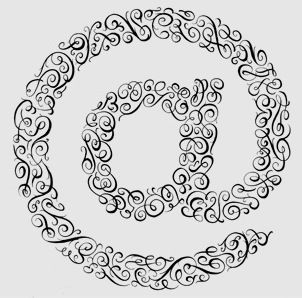
The
symbol, @, that most younger people know only from email addresses and
Twitter, has a long history. Its medieval origin is a little fuzzy, but
there are several possible explanations of its birth. When I was young,
it was shorthand for "at," which always seemed silly to me, because why
abbreviate such a short word?
The symbol later took
on a historic role in commerce. Merchants have long used it to signify
“at the rate of”—as in “12 widgets @ $1.” (That the total is $12, not
$1, speaks to the symbol’s pivotal importance.) Still, the machine age
was not so kind to @. The first typewriters, built in the mid-1800s,
didn’t include @. Likewise, @ was not among the symbolic array of the
earliest punch-card tabulating systems (first used in collecting and
processing the 1890 U.S. census), which were precursors to computer
programming.
The symbol’s modern obscurity ended in 1971, when a
computer scientist named Ray Tomlinson was facing a vexing problem: how
to connect people who programmed computers with one another.
The rest is history, and if you want to read that history, you'll find it at Smithsonian.
Here.
 The
symbol, @, that most younger people know only from email addresses and
Twitter, has a long history. Its medieval origin is a little fuzzy, but
there are several possible explanations of its birth. When I was young,
it was shorthand for "at," which always seemed silly to me, because why
abbreviate such a short word?
The
symbol, @, that most younger people know only from email addresses and
Twitter, has a long history. Its medieval origin is a little fuzzy, but
there are several possible explanations of its birth. When I was young,
it was shorthand for "at," which always seemed silly to me, because why
abbreviate such a short word? 
No comments:
Post a Comment